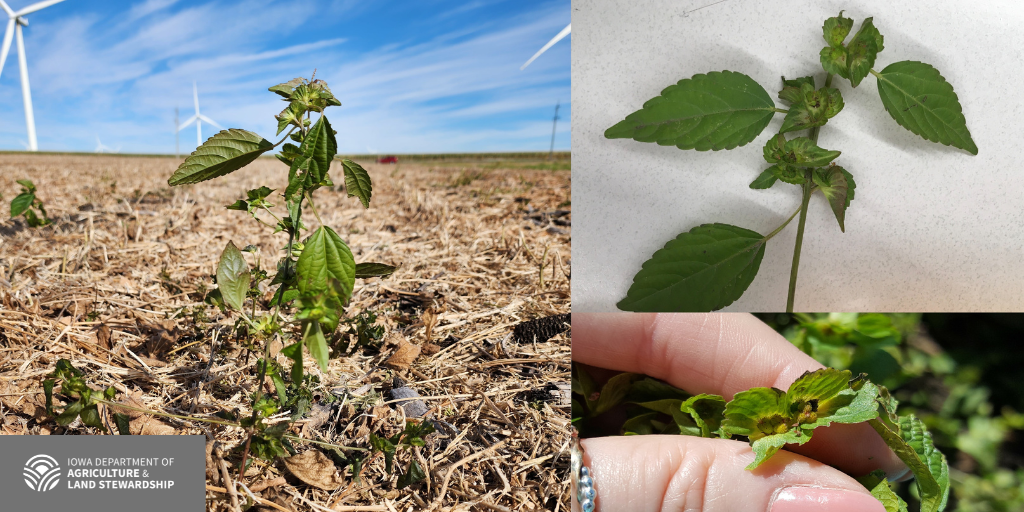
To identify Asian copperleaf, look for one of its distinguishing characteristics, the bracts located beneath the flowers. (Photo: Iowa Department of Agriculture and Land Stewardship).
IDALS urges Iowans to report Asian copperleaf sightings
October 27, 2022 | Kriss Nelson
A weed discovered in Black Hawk County in 2016 was spotted again in 2022. Due to its potential threat to row crops, the Iowa Department of Agriculture (IDALS) is asking Iowans to report any sightings to determine the potential scale of the infestation.
Asian copperleaf (Acalypha australis) is native to China, Australia, Japan and other countries in the region and was first discovered in Iowa in a cornfield near Cedar Falls. Before this discovery in 2016, the only documented infestation in North America was within New York City.
The plant was recently found in a soybean field in Grundy County, nearly 30 miles from the original infestation. In both fields, several dense patches of the weed were present throughout the field, indicating the weed was in the field for several years before being identified. It is unknown how the plant was introduced to Iowa, but the two reported infestations are likely related. The plant is a threat to row crops in its native range.
Scott Nelson, Iowa Soybean Association senior field services program manager, says if farmers find Asian copperleaf in their fields, contact IDALS or Iowa State University Extension.
“Mark the area where you found the weed with GPS or flags and scout this area thoroughly and take all steps necessary to eradicate the weed,” says Nelson.
Quick action could help eliminate the pest from your farms.
“Taking action and responding to new weed threats can work and save you money on input costs and production difficulties,” says Nelson.
Similar action was taken on an eastern Iowa farm when palmer amaranth was identified.
“The farmer diligently scouted his fields and took action to eradicate the weed,” says Nelson. “The result was that palmer is nearly non-existent on his farm.”
Nelson advises that there have been reports of glyphosate herbicide resistance in Asian copperleaf but is unaware if the populations in Iowa have any resistance at this point.
Identification
Asian copperleaf is in the spurge family but lacks milky sap common in many spurges. It is an erect plant that can reach heights of 2-3 feet, but most plants found in Iowa were less than 18 inches in height. Leaves are 2-3 inches long, lanceolate with serrated (finely toothed) edges.
The distinguishing characteristic of Asian copperleaf is the bracts located beneath the flowers. The bracts are circular to heart-shaped with a dentate margin. Virginia copperleaf and three-seeded mercury, two other Acalypha species in Iowa with a similar growth habit, have deeply lobed bracts. It is unlikely that anyone could confidently differentiate between these species prior to flowering. Asian copperleaf seems to emerge late in the season and remains under the crop canopy throughout the growing season.
Requested action
IDALS and Iowa State University are interested in determining how widespread the weed is across the state. A better estimate of the risk it poses to Iowa crop production can be made by determining how much area is infested with this weed. Asian copperleaf was detected in both fields during crop harvest. Thus, the Iowa Department of Agriculture and Land Stewardship requests that farmers and others in the agricultural industry keep an eye out for this plant as fields are harvested.
If you detect the plant, please contact the Iowa Department of Agriculture and Land Stewardship at 515-725-1470 or e-mail entomology@iowaagriculture.gov
Back